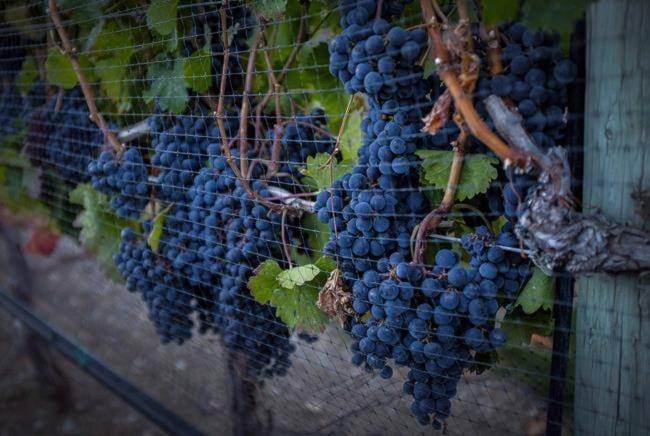U.S. Trade Representative Robert Lighthizer has an issue with getting agricultural products to Canada, and it might not be the ones you think.
91������Ƶ�It91������Ƶ�s an extraordinary problem for those people who are affected,91������Ƶ� Lighthizer said June 22 when he appeared before the House of Representatives ways and means committee to talk about trade priorities. 91������Ƶ�And there is no justification for it.91������Ƶ�
Much of the spotlight on Canada-U.S. trade leading up to the new North American Free Trade talks has been on dairy products.
This time, though, Lighthizer was not talking about cheese, but what you pair it with: wine.
Two days before President Donald Trump entered the White House, the U.S. launched an aggressive trade challenge by asking the World Trade Organization to examine how the B.C. government was allowing only wine produced within the province to be sold in grocery stores.
Lighthizer told the committee in June that WTO consultations 91������Ƶ� the first stage of the process 91������Ƶ� had not resolved things, so the administration was thinking about whether to press ahead with a dispute settlement panel in Geneva.
Then he mentioned another, perhaps friendlier, way to go: the new NAFTA.
91������Ƶ�In this case it would make more sense to negotiate and do it in a less hostile way,91������Ƶ� he said.
A month later, Lighthizer published the list of goals the Trump administration has for a renegotiated trade deal with Canada and Mexico, in advance of the first round of talks on Aug. 16.
Canadian wine got a mention in the accompanying news release.
The move to allow only B.C. wines to be sold in B.C. grocery stores, which the U.S. argues is discriminatory, is not the only issue the Trump administration has with the way Canada imports and sells wine.
The U.S. government91������Ƶ�s annual report on trade barriers highlights a complaint that would be shared by many Canadian consumers who have long chafed at limited access: in many parts of the country, province-run liquor control boards restrict the sale of wine, beer and spirits.
RELATED:
Restrictions on listings, cost-of-service mark-ups, maximum or minimum price points, distribution policies, labelling requirements and making suppliers discount their prices to meet sales targets were all mentioned as things getting in the way.
The report said the U.S. government is reviewing the situation in Ontario, where about 70 grocery stores are now allowed to sell both domestic and imported wine, under certain conditions that include country of origin.
It also suggested a recent move to allow Quebec wine to be sold in Quebec grocery stores could give craft wineries an unfair advantage.
The fledging Canadian wine industry won some concessions in the 1987 Canada-U.S. Free Trade Agreement (CUSTFA), which meant they were allowed to grandfather in some protectionist measures to support domestic wines in exchange for opening up the Canadian market to more U.S. wines.
Those protections were integrated into NAFTA.
Tom LaFaille, the vice-president and international trade counsel for the Wine Institute, an advocacy organization for the California wine industry, argued the Canadian wine industry is now big enough that it should not be able to get away with such supports.
91������Ƶ�We just feel that it91������Ƶ�s important to end those practices, some of which may have been imposed when Canadian wine was in its infancy,91������Ƶ� said LaFaille.
The Canadian Vintners Association, meanwhile, is treading carefully when it comes to NAFTA.
Asha Hingorani, the director of government and public affairs for the industry association, said the organization is keeping the details of its position secret until talks begin, but said the complaints coming from the U.S., which has a $450-million wine trade surplus with Canada, should be put into perspective.
91������Ƶ�Our industry generates $9 billion in economic impact to the Canadian economy and we produce 37,000 jobs, but compared to the size of the U.S., it91������Ƶ�s like a David vs. Goliath scenario,91������Ƶ� she wrote.
She said the U.S. wine industry has a 67-per-cent share of its home market while Canadian wines have a 32-per-cent share of the market here.
And while U.S. wines have a 14.2-per-cent share of the wine sales in Canada, up from 6.5 per cent the year before the CUSTFA took effect, Canadian wines have practically none of retail sales market share below the border.
91������Ƶ�It91������Ƶ�s important we have a fair deal that benefits both,91������Ƶ� she said.
Global Affairs Canada did not respond to a request for comment on the role it expects wine to play in the NAFTA talks, but Hingorani said her association has been 91������Ƶ�in constant contact91������Ƶ� with departmental officials working on the wine file.
Miles Prodan, president and CEO of the British Columbia Wine Institute, expressed some anxiety that the small size of the Canadian wine industry could end up meaning Canadian products get lost in the shuffle.
91������Ƶ�I guess our concern is that with all the stuff on the table, wine isn91������Ƶ�t used as a bargaining chip somehow,91������Ƶ� he said.
Joanna Smith, The Canadian Press
strong>Like us on and follow us on .



